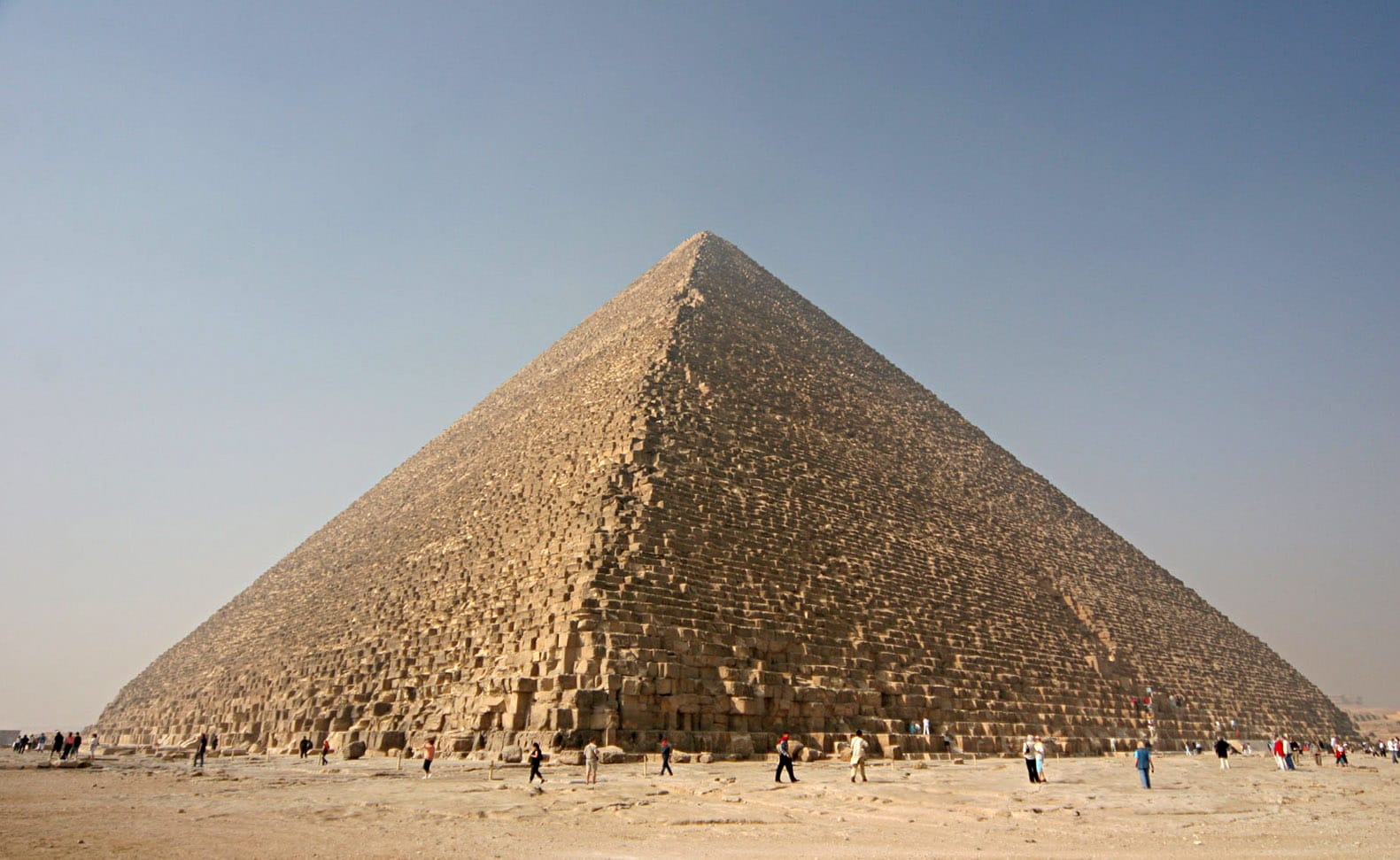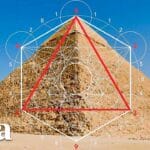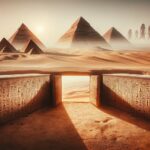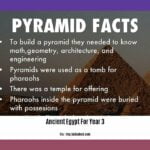Witness the Majesty of the Great Pyramid
Ever imagine standing at the foot of a structure built thousands of years ago, so massive it dwarfs you? That’s the allure of the Great Pyramid of Khufu, a monument that has captivated humanity for centuries. While a physical journey to this ancient wonder is an experience in itself, we can still capture its magic through pictures.
Pictures act as portals through time. Imagine scrolling through old drawings and early photographs, their graininess a testament to history, showing the pyramid as a solitary sentinel in the vast desert. Suddenly, you’re met with crystal-clear modern images, capturing the intricate details of the pyramid’s massive stone blocks, hinting at the secrets they hold.
Drone photography provides a breathtaking, bird’s-eye view, showcasing the enormity of the pyramid and the sprawling Giza Plateau. Even more impressive, 3D models, meticulously created from these photos, allow you to virtually step inside the pyramid’s labyrinthine passages and chambers. These technological marvels provide a glimpse into a world long gone.
The true power of these images lies in their ability to tell a story. They whisper of the incredible skill and ingenuity of the ancient Egyptians, who, with sheer willpower and knowledge, erected one of the world’s most iconic landmarks. Examining these visual records, one can’t help but wonder about the lives and beliefs of those who built this marvel.
These pictures breathe life into the past and ignite our curiosity about history. They serve as a powerful reminder that even the most impressive structures we see today had humble beginnings. They inspire us to learn, explore, and maybe even leave our own mark on the world. Embark on this photographic journey and experience the awe-inspiring legacy of the Great Pyramid of Khufu.
Unveiling the Majesty: What Did the Great Pyramid of Khufu REALLY Look Like?
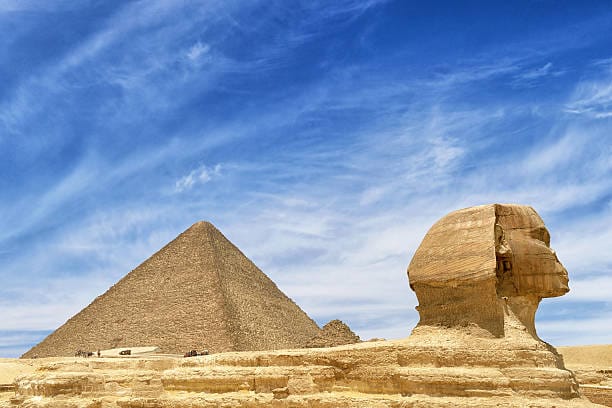
We’ve journeyed through the interior of the Great Pyramid, but what about its exterior? Imagine, if you will, not the weathered giant we see today, but a structure gleaming under the Egyptian sun. Picture a pyramid encased in polished white limestone, its sides so smooth they likely resembled mirrors, reflecting the desert light for miles. And to crown this architectural marvel—a pyramidion, perhaps made of gleaming gold, would have adorned its apex. This sight would have been visible for miles across the desert.
But the Great Pyramid was more than just an aesthetically stunning monument; it was a symbol of power and a testament to innovative engineering. The ancient Egyptians aligned this massive structure perfectly with the cardinal directions—a feat demonstrating a sophisticated understanding of astronomy. The pyramid’s interior, a complex network of chambers and passages, reflects a level of precision that continues to baffle modern engineers.
Fortunately, the pyramid whispers clues to its former glory. Hidden within its stones and passageways are pieces of a giant puzzle. Experts meticulously combine these clues with ancient writings and drawings to reconstruct what the pyramid may have looked like. It’s like digitally traveling back in time!
Reconstructing a Wonder: Clues to the Past
Here’s a glimpse into the Great Pyramid’s former splendor:
- A Dazzling White Coat: The entire pyramid was sheathed in polished white limestone, quarried from Tura. This wasn’t just any rock; its smooth, reflective surface amplified the desert sun, transforming the entire structure into a radiant beacon.
- A Golden Crown: The pyramidion, according to experts, was likely crafted from solid gold or perhaps electrum, an alloy of gold and silver. This radiant cap would have further intensified the pyramid’s brilliance, making it visible for miles.
- Spot-On Alignment: The near-perfect alignment of the Great Pyramid with the cardinal directions was no accident. It reflects the ancient Egyptians’ advanced knowledge of astronomy, a testament to their ability to “read” the stars with impressive accuracy. This precision begs the question: how did they achieve such a feat with the tools available at the time?
- An Inside Maze: The pyramid’s interior is a complex network of chambers and passages, all constructed with incredible skill and precision. The ancient Egyptians employed a technique called “corbeling,” a method of stacking stones to create arches and vaults without the need for supporting beams. This method, for its time, represents a significant engineering accomplishment.
While we can’t turn back the clock, we can, through careful study and analysis, piece together a vivid picture of the Great Pyramid’s original splendor.
Unraveling the Truth: Is the Pyramid of Khufu the Same as the Pyramid of Giza?
Yes, the Pyramid of Khufu and the Great Pyramid of Giza are one and the same. Think of “Khufu” as its given name, while “Great Pyramid of Giza” is the moniker by which it’s more commonly known.
This magnificent pyramid stands as the oldest and largest of the three pyramids dominating the Giza Plateau. It was erected as the final resting place for Pharaoh Khufu, who reigned during the Fourth Dynasty of Egypt’s Old Kingdom. The construction of this behemoth, a testament to ancient Egyptian might, took an estimated 20 years, requiring the combined efforts of thousands of skilled laborers, brilliant architects, and innovative engineers. Considering the lack of modern machinery, one can only imagine the sheer effort this undertaking demanded.
Adding to its allure, the pyramid was once covered in gleaming white limestone that would have reflected the sunlight like a mirror, creating a breathtaking spectacle. The design and construction of this pyramid remain a source of wonder and inspiration, showcasing the advanced architectural and engineering prowess of the ancient Egyptians.
Is the Great Pyramid of Khufu Still Standing?
Absolutely! The Great Pyramid of Khufu stands as a testament to enduring ingenuity and a symbol of ancient Egypt’s legacy. Can you believe it? A pyramid built over 4,600 years ago still dominates the desert landscape. While time has inevitably taken its toll, stripping away the smooth outer casing, the core structure of Khufu’s Pyramid remains remarkably intact. It’s a testament to the ingenuity of its ancient builders.
Of course, the pyramid’s survival isn’t merely a matter of chance. Ongoing preservation efforts work tirelessly to protect this ancient treasure, ensuring it continues to inspire generations to come. And with every passing year, new discoveries are made, proving that the Great Pyramid of Giza isn’t simply a relic of the past; it’s a captivating enigma and a powerful symbol of human potential.
Why is the Pyramid of Khufu Famous?
The Great Pyramid of Giza’s fame extends far beyond its impressive size. It’s more than just a pile of rocks. This final resting place for Pharaoh Khufu has mesmerized people for centuries. Its sheer scale, the mystery surrounding its construction, and its prominent place in history have secured its position as one of the most recognizable landmarks on Earth.
Reasons for Its Enduring Fame:
- Scale and Grandeur: The sheer size of the Great Pyramid is awe-inspiring. It was the tallest man-made structure for over 3,800 years, and its massive scale continues to captivate the imagination.
- Engineering Marvel: The precision and ingenuity with which it was built are astounding. The near-perfect alignment with the cardinal directions, the intricate internal chambers and passageways, and the sheer logistical feat of quarrying, transporting, and placing millions of massive stone blocks—some weighing over 80 tons—continue to baffle and inspire engineers and architects today.
- Historical Significance: The Great Pyramid offers a unique window into ancient Egyptian civilization, their beliefs about the afterlife, their architectural prowess, and their social structure. It stands as a testament to a civilization that flourished thousands of years ago.
- Enduring Mystery: Despite centuries of study, the Great Pyramid still holds secrets. The exact construction methods used remain a subject of debate, and there are ongoing explorations and investigations utilizing cutting-edge technologies to reveal hidden chambers and uncover new clues about its creation.
- Cultural Impact: The Great Pyramid has transcended its physical form to become a global icon, inspiring countless works of art, literature, film, and music. It features prominently in popular culture and represents the allure and mystery of ancient Egypt.
- Tourist Destination: Millions of visitors from around the world flock to Giza each year to witness the grandeur of the Great Pyramid. It is a site of pilgrimage for history buffs, architecture enthusiasts, and those simply in awe of human ingenuity.
A Legacy Written in Stone
The Pyramid of Khufu is a testament to human ambition, ingenuity, and the power of belief. It stands as a symbol of ancient Egyptian civilization and continues to inspire wonder and curiosity in the modern world. It is a reminder that even the most enduring monuments have stories to tell, and that the quest to understand our past is a journey without end.
- SYBAU See You Baby Meaning: Gen Z Slang Evolves - July 1, 2025
- Unlock Your Inner Youth: Lifestyle Secrets for a Vibrant Life - July 1, 2025
- Decode SYBAU Meaning: Gen Z Slang Explained - July 1, 2025
